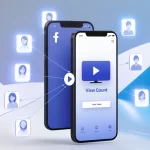Understanding How to Dispute Apple Charges
Apple charges a range of transactions users might see while using all of Apple’s provided services. Typically, these charges come from purchases on platforms such as the App Store, iTunes, Apple Music, and just about any other subscription to an Apple service, such as Apple TV+, iCloud, and Apple Arcade. Customers must fully understand these charges have many levels and, thus, must manage their accounts and subscriptions to the best of their ability. in this article, you will learn how to Dispute Apple Charges
App Store and Subscription Charges
For example, the purchase charge made when you buy through the App Store might show under the title of the game or app you picked. And just like that, a subscription to Apple Music or iTunes can lead to payments that repeat monthly or yearly, depending on the plan to which you have subscribed. options to Apple Music or iTunes may result in recurring charges that are posted monthly or yearly, depending on the selected plan. Usually, linking each charge to a specific Apple ID makes separating out item charges much easier.
Tracking Purchases and Managing Accounts
Users can track these transactions on purchase history on their Android device or by logging into their Apple ID account from the Web. This can help them figure out exactly what any charge they see on their billing statement actually is. Users are asked to keep track of their accounts on a regular basis to avoid misinterpretation of their spending and to understand the structure of spending.
Identifying and Avoiding Common Discrepancies
Some users may commit some of the most common lies, such as unnoticed transactions, services not paid for, and subscriptions not intended for renewal. Additionally, users may claim to have been charged twice or paid for items not purchased. Getting a good sense of potentially existing discrepancies early is crucial because it can change the whole game through the way of the dispute process. Having an idea of how Apple charges will allow consumers to easily manage those problems as they crop up and navigate the refund process.
Reasons to Dispute an Apple Charge
There may be various legitimate reasons why customers disagree with Apple’s charges when using its services. Understanding the reasons for these disputes can help users manage their financial engagements with Apple well.
The unauthorized purchase is usually invoked upon initiating a dispute. These are often the result of compromised accounts or accidental clicks—in other words, unexpected charges that users had not meant to cover. Users must keep a close eye on their accounts, as identifying unauthorized charges early increases the likelihood of a favorable outcome when disputing them.
An additional common problem is not receiving items. Suppose you know that you won’t receive the item anytime soon. In that case, it’s important for a user to document their order and any communication with Apple about estimates of when the item would arrive. This will be helpful with regard to a refund or resolution for missed items.
Like any other payment method, unexpected charges can be why a user decides to dispute an Apple charge. Automatic renewing subscriptions surprises users without revealing most of what happened and needs to be clarified. Customers must know about numerous subscriptions tied to their Apple ID and the associated cost. A dispute may be appropriate if discrepancies in billing arise that users cannot claim.
Finally, a charge dispute can arise from dissatisfaction with a product or service. Customers have the right to state their concerns about faulty devices, bad service quality, or bad representation of an item. In situations like that, it is imperative that you grasp your consumer rights.
The combination of all these factors will help customers choose whether to dispute Apple charges, making it possible to negotiate with Apple customers in a fair manner.
How to Dispute an Apple Charge
It might sound complex but there’s a step by step way to dispute an Apple charge. The first bit of work is to collect the necessary information such as date, amount, and the type of purchase. Secondly, you would do well to review your purchase history to check if the charge in question is all genuine.
Once you’ve got the info you need, then it’s off to Apple’s website or app. If you’re an Apple device user, the simplest way is to just go to the App Store to see your account info. Once you’re there, you should simply select the “Purchase History” option and, from there, select the transaction you wish to dispute. It’s this platform where you can report issues directly, and it’s recommended you do so to begin with.
If your issue isn’t resolved with the App Store, you can turn to the Apple Support platform. Head over to the Apple Support website and click the billing issues section. You can pick Get Support and Billing and subscriptions here. Then, you can choose “Report a Problem.” This section provides different resolutions for distinct issues, such as unwanted subscriptions and unapproved events.
After you submit your dispute, you’ll receive a confirmation email from Apple. The resolution can take some time; usually, it takes days for Apple to investigate the problem. At this moment, it’s important to check your email to see if they provide any further instructions or information requests. When resolved, you will be notified as to the outcome, which may include a refund, adjustment, or explanation of the charge. What is YouTube Ambient Mode?
What to Do If Your Dispute is Denied
It’s frustrating to receive a denial for your dispute over an Apple charge. But it would help if you thought about what you will do and have a plan of action when you begin addressing the problem. First, take a look at the response returned by Apple. This might be a great a great place to find out why this was denied: Maybe they missed documentation, or maybe they didn’t have specific dispute requirements. As a result, when you carefully analyze this information to pinpoint possible weaknesses in your original claim, you can create a better case if you decide to take further action.
Escalation Options for Unjust Decisions
Then, look at your escalation options. If you feel the decision is unjust, you can talk directly to your credit card company or bank. If you don’t feel you can resolve the dispute independently, work with many financial institutions to have dispute resolution procedures to help further and they are unwilling to support and advocate on your behalf, a professional can help, either on your own or through a lawyer. Ensure you’re also giving them all the information they need, such as your original dispute details, plus whatever Apple has sent you, to give them an idea of what that dispute is like and, more helpfully, what they sent you. Frugal Male Fashion: Stylish on a Budget Without Compromise
| Step | Action |
|---|---|
| 1. Review | Check Apple receipts and purchases |
| 2. Verify | Look for subscriptions or family purchases |
| 3. Report | Dispute through Apple’s website |
| 4. Follow Up | Contact Apple Support if unresolved |
Frugal Male Fashion
Don’t forget how powerful consumer protection agencies can be as well. If your situation warrants it, the Better Business Bureau or the Federal Trade Commission can provide guidance and mediate disputes. Sometimes, simply filing a formal complaint will make the company reexamine its position. Lastly, if you want to increase your chances of winning any future disputes with Apple or any other large company, In that case, you may want to keep your records as detailed as possible of your transactions and communications to provide proof that what you are accusing them of is untrue. e and may be able to mediate disputes when warranted. Submitting a formal complaint can sometimes prompt the company to reevaluate its stance.
Finally, consider keeping meticulous records of your transactions and communications to enhance your chances of success in future disputes with Apple or similar companies. Document the interaction and save all the supporting evidence, like emails and receipts, as you’ll need that proof to create your case. It can mean the difference between a solid case and an outcome that isn’t so satisfactory during Dispute Apple Charges.






